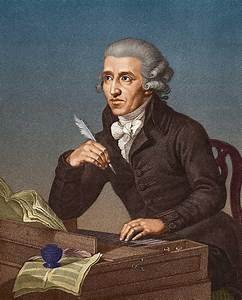 |
| Brahms in his study. |
"The first 4 measures require a trill," he writes, "presumably on the top note, seemingly with 4 and 5, with other notes of the chord beneath it briefly played by other fingers and then released. Certainly trills with 4 and 5 are difficult." In his quest for information, he "found a heated debate about whether it is acceptable to use other fingers on the top trill when they become available after releasing the lower notes, especially for smaller hands, or whether one is obliged to employ the very difficult 4/5 trill in these 4 measures." I believe, according to his report, that the word cheating may have been bandied about. (As far as I know, Brahms did not indicate any fingering.)
 |
| Brahms Paganini Var. 4, MM 1-2 |
Such an important issue has been raised here—yet again. I'm very familiar with the "cheater" school of thought. My answer to that is the score tells us how the music should sound, not how it feels in our hands. This means that we get to choose fingerings and redistribute notes between the hands in any manner that suits us as long as in so doing we don't hamper the musical objective, even uncross hands if it makes the music more technically accessible. The audience doesn't care what fingers you use. They just want a nice concert.
Most of the concert music we play on the piano was written by great (mostly) pianists for themselves to play. So I read these scores assuming that some built-in accommodations are intended. The composer can't really give technical explanations in his score, if you follow my logic. In the above example, the octave chord is one unit, the trill another. By that I mean, play the chord with 1, 3, 5, bouncing immediately to 5 on the F (yes, 5-5) and trill with 5-3, the F being the second note of the trill. This works very well if the arm is kept at a slight (slight!) angle, the elbow a tiny bit in toward the torso. (It is also possible to begin the trill by starting on 4, yes, over 5, and trill with 2-3 until the triplet [see below], which would be 2-4-3 in order to get the thumb closer to the next octave position.) The D-sharp is the end of the group, which provides the spring-board (slight up) for landing down again on the next chord. This is really rather easy once worked in carefully.
 |
| Brahms Paganini Var. 4 M1 Fingerings and Rhythm |
More important than fingering, though, is the rhythm of the trill. Many pianists make the mistake of seeing trill and throw themselves at it. All ornaments indicated with a symbol require a place in time. Figure out how many notes you will play and in what rhythms and how they fit with the left hand. Try starting with four groups of two 16ths for each of the eighths in the left hand, making a 16th-note triplet on the fifth eighth. Depending on your tempo, this might actually be enough of a trill. If you want a faster trill (slower tempo?) try making triplets on each eighth. (I think duple is fast enough.) The upshot here is that once this coordination has been well worked in, it is possible to abandon the precise rhythms, letting the trill find its own number of notes. The process teaches the hand what it feels like to be free, and not jam, which is what can happen if tackled without thought.
In sixty years of playing the piano, I have never felt required to play an extended trill with four and five. If you know of such a passage in standard repertoire, I'd be glad to know about it.










